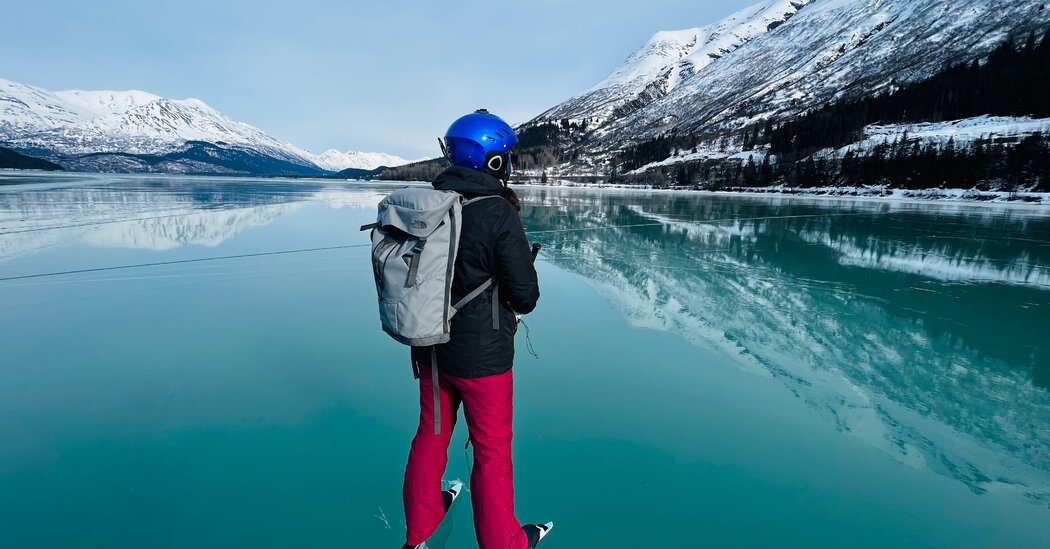I’d been waiting for months when I finally got the call from Alaska last March: Wild ice was on.
A roughly two-week high-pressure window of cold and clear weather had frozen Portage Lake, the terminus of Portage Glacier, some 50 miles southeast of Anchorage, and it was solid enough to skate on its wild — or natural — ice.
“Skating A-grade ice under a glacier really is a ‘take off work now and just go to it’ type of treat, even for us Alaskans,” said Paxson Woelber, who owns the Anchorage-based skate manufacturer Ermine Skate.
A few months earlier, I had purchased a pair of Ermine Nordic skates, long blades similar to speed skates that affix to the bindings of cross-country ski boots. The compatibility allows skiers to get to remote ice, then switch into blades to skate without changing boots and, as Mr. Woelber put it, “get you off the rink.”
While figure and hockey skates are designed for maneuverability, including directional changes and tight turns, Nordic skates are designed for distance. The longer, faster blades require less effort to propel, and their stability makes them more tolerant of natural conditions like bumpy or weedy ice.
But the problem with Nordic skating or any kind of wild skating — which is defined as outdoors and on naturally formed ice, regardless of the style of skate used — is finding good ice. Wild-ice seekers extol late fall and sometimes spring for freezing conditions without snowfall, which degrades ice.
“That’s why it’s so magical: It’s fleeting,” said Laura Kottlowski, a former competitive figure skater based in Golden, Colo., whom I called in my search for wild ice. TikTok and Instagram videos of her jumping and spinning on high alpine lakes have gone viral, and Ms. Kottlowski teaches her combination of winter mountaineering and ice skating as Learn to Skate Outside.
Wild Ice 101
I’ve been skating outside since childhood, mostly on Midwestern lakes and ponds that I know well. But the kind of wilderness that Ms. Kottlowski and Mr. Woelber explore requires next-level knowledge of ice and safety gear.
Preparing to skate in the wildest spot of my life, I spent a few hours watching videos in an online class on wild ice ($149) made by Luc Mehl, a swift-water safety instructor who grew up in Alaska and swapped backcountry skiing for skating several years ago as a way to avoid avalanche risks. Based in Anchorage, he has become known for his skate safety training and stunning social media videos of him…
Click Here to Read the Full Original Article at NYT > Travel…
